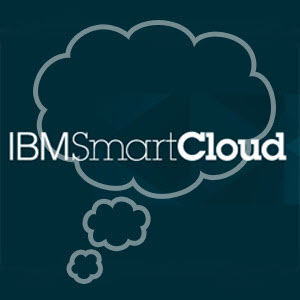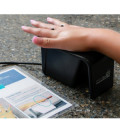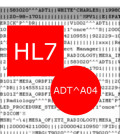What is Cross-Enterprise Document Sharing (XDS)?
By dkorolyk on March 10, 2014
What is Cross-Enterprise Document Sharing (XDS)?
This is a great presentation outlining the structure and architecture of Cross a Cross-Enterprise Document Sharing (XDS) environment.
This is a 57 slide presentation. The presentation transcript is included as well.
Presentation Transcript:
- 1. Cross-Enterprise Document Sharing (XDS)
- 2. XDS Big Picture Transactions and Actors Metadata How it integrates with PIX/PDQ How it integrates with ATNA Content Profiles
- 3. Cross-Enterprise Document Sharing (XDS) Big Picture Provide support for document-based patient EHR Support for document storage within existing products Provide support for indexing of patient documents Support query and retrieval of patient documents Scalable architecture
- 4. Cross-Enterprise Document Sharing (XDS) Big Picture Points of view EHR-CR : Care-delivery Record Patient information Managed by a Care Delivery Organization EHR-LR : Longitudinal Record Documents shared by EHR-CR(s) A Patient’s long term health history Tracked by Registry Clinical Affinity Domain : Group of healthcare enterprises (EHR-CR) Common set of policies Share a single registry Archival
- 5. Cross-Enterprise Document Sharing (XDS) Big Picture Foundation for Health IT Infrastructures: Shared Electronic Health Record, in a community, region, etc. Effective means to contribute and access: clinical documents across health enterprises. Scalable sharing of documents: between private physicians, clinics, long term care, pharmacy, acute care with different clinical IT systems. Easy access: Care providers are offered means to query and retrieve clinical documents of interest.
- 6. Cross-Enterprise Document Sharing (XDS) Big Picture Distributed: Each Care delivery organization “publishes” clinical information for others. Actual documents may remain in the source system. Cross-Enterprise: A Registry provides an index for published documents that can be queried! Document Centric: Published clinical data is organized into “clinical documents”. using agreed standard document types (HL7-CDA/CCD, PDF, DICOM, etc.)
- 7. Cross-Enterprise Document Sharing (XDS) Big Picture Document Content Neutral: Document content is processed only by source and consumer systems. Infrastructure is generic. Standardized Registry Attributes: Documents are described by standardized set of attributes. Standardized queries supported by all vendors.
- 8. XDS Actors Document Source Document Repository Document Registry Document Consumer
- 9. Document Source Has document to store Creates description (metadata) for document Submits
- 10. Document Repository Accepts document and metadata from Document Source Stores document Forwards metadata to Document Registry Later, reproduces document on request (allows retrieval)
- 11. Document Registry Accepts metadata from Repository Stored metadata Accepts queries about metadata Returns metadata matching queries
- 12. Document Consumer Generates queries to Registry Accepts metadata back from Registry Displays list of documents for user to choose from (probably) When user selects document from list, retrieves and displays document
- 13. Cross-Enterprise Document Sharing (XDS) Transaction Diagram
- 14. Patient Registration
- 15. Document Submission
- 16. Query and Retrieve
- 17. Enterprise Enterprise Enterprise Enterprise Imaging Center Hospital B Hospital A Emergency Room PCP Patient Admin Repository Repository Repository Repository Cross-Enterprise Document Registry (XDS) Cross-Enterprise Document Sharing
- 18. Cross-Enterprise Document Sharing (XDS) Actors Document Source Source of documents and metadata about documents Document Repository Stores documents, requests indexing in Document Registry, supports retrieval Document Registry Indexes documents, supports search Patient Identity Source Feeds identity of known patients to Document Registry Document Consumer Initiates search and retrieval for consumer of documents
- 19. Metadata Objects Metadata is data stored in the Registry Document – represents a real document Submission Set – included in all submissions to document the submitted “package” Folder – for grouping documents (directory metaphor) Association – Links other objects together
- 20. Object Structure Each Metadata Object has internal structure ebRIM standard coding used (XML)
- 21. Document Submission Submission Set Document Association (HasMember) Document Association (HasMember)
- 22. Submission Set Attributes Author person, role, specialty, institution Title, comments, submission time Availability Status Submitted or Approved Coded elements contentType (type of clinical activity) Identifiers Patient ID, Source ID, Unique ID, UUID
- 23. Document Attributes Author Person, role, specialty, institution Legal Authenticator Title, comments, creation time, service start/stop time Availability Status Submitted, Approved, Deprecated Identifiers Patient ID, Unique ID, UUID Demographics Source Patient ID, Patient Demographics
- 24. Document Attributes (cont) Coded Values Kind of Document Class Code (general catagory) Type Code (more detail) Event Code (main clinical event) Healthcare Facility Type Practice Setting Type Confidentiality Code Technical Details MIME Type Format Code (more detail) Size Hash URI Language
- 25. Association Attributes Type HasMember RPLC (Replace) APND (Appends) XFRM (Transformation) Signs SubmissionSetStatus Original or Reference Pointers sourceObject, targetObject
- 26. Multiple Document Submission Submission Set Document Association (HasMember) Document Association (HasMember)
- 27. Document Replacement Submission Set Status = Approved Document Status = Approved Association (HasMember) Submission Set Status = Approved Document Status = Approved Association (HasMember) Association (RPLC) Document Status = Approved Status = Deprecated
- 28. Digital Signature Clinical Document Stored in Repository Indexed in Registry Digital Signature (Document) Stored in Repository Indexed in Registry How is Signature “attached” to Clinical Document?
- 29. Digital Signature (DSG Profile) Submission Set Status = Approved Clinical Document Status = Approved Association (HasMember) Submission Set Status = Approved Signature Document Status = Approved Association (HasMember) Association (Signs)
- 30. Cross-Enterprise Document Sharing (XDS) Metadata handling Generates Stores Interprets Adds
- 31. Affinity Domain Set of organizations/systems organized around a single Registry Common set of Codes Single Patient ID Domain Involves business and legal agreements Security model/agreements
- 32. Cross-Enterprise Document Sharing (XDS) Standards Used Healthcare Content Standards HL7 CDA, CEN EHRcom HL7, ASTM CCR DICOM … Internet Standards HTML, HTTP, ISO, PDF, JPEG … Electronic Business Standards ebXML, SOAP …
- 33. Cross-Enterprise Document Sharing (XDS.a) Standards Used XDS.a Infrastructure Standards OASIS/ebXML Registry Information Model v2.0 Basis of XDS Registry Information Model Registry Services Specifications v2.0 Registry Services Messaging Services Specifications v2.0 Offline protocols ISO/IEC 9075 Database Language SQL Registry Query Language SOAP with Attachments Protocol for communication with XDS Registries and Repositories SHA-1 [ FIPS 180-1 ] Document Hashes
- 34. Cross-Enterprise Document Sharing (XDS) Standards Used XDS.a Infrastructure Standards (cont) HL7 Version 2.3.1 Messages for Patient Identity Management HL7 Version 2.5 Datatypes for XDS Registry Attribute values HL7 CDA Release 1 XDS Document concept definition Source of XDS Document Entry Attributes DICOM, ASTM CCR, HL7 CDA Release 2, CEN EHRcom Sources of XDS Document Entry Attributes
- 35. HTTP Protocol for Retrieve Document Online SOAP bindings SMTP Offline ebMS bindings IETF Language Identifiers MIME Document Type codes UTF-8 Encoding of Registry Attributes XDS.a Infrastructure Standards (cont)
- 36. XDS.a and XDS.b Actors are the same in both XDS.a and XDS.b Metadata is the same in both XDS.a and XDS.b XDS.a Original XDS profile, pre 2007 Based on ebXML Reg/Rep 2.1 SOAP with attachments based Provide and Register Retrieve is HTTP GET XDS.b Based on a use of the Web Services and ebXML Reg/Reg standards that is consistent with the current developments and best practices in the industry Based on ebXML Reg/Rep 3.0 MTOM based Provide and Register MTOM based retrieve HL7 V3 Patient Identity Feed
- 37. Cross-Enterprise Document Sharing (XDS) Standards Used Two “categories” of standards used XDS Infrastructure XDS Content
- 38. Cross-Enterprise Document Sharing (XDS) Content Profiles Outside scope of XDS; layer on top of XDS Content Profiles Document use cases and translation of document content into registry metadata Publishable separately Generated (mostly) by other committees (PCC, Radiology, Lab etc) Of concern only to Document Source and Document Consumer actors Base standards for Content Profiles include: HL7 CDA, DICOM, ASTM CCR
- 39. Cross-Enterprise Document Sharing (XDS) Options Options center around Document Source actor Basic operations Submit single document Replace existing document Optional features Off-line mode Multi-document submission Document life-cycle management Submit addendum or transformation of document Folder management Create folder, add to folder
- 40. Cross-Enterprise Document Sharing (XDS) PIX/PDQ integration Patient Identity Feed (PIX) Notification from ADT system to Document Registry of patient admission/registration Submission to Registry requires validated patient ID Affinity Domain Patient ID Patient Demographics Query (PDQ) Identify patient based on query of demographic information Needed by Document Source: assign correct patient ID Needed by Document Consumer: query against correct patient ID
- 41. Cross-Enterprise Document Sharing (XDS) Transaction Diagram
- 42. Cross-Enterprise Document Sharing (XDS) PIX/PDQ integration
- 43. Cross-Enterprise Document Sharing (XDS) Supporting Profiles Time/Audit/Authentication Constant Time (CT) Audit Trail and Node Authentication (ATNA) Cross-Enterprise User Authentication (XUA)
- 44. Cross-Enterprise Document Sharing (XDS) ATNA AT Audit Trail Logs release/transfer of PHI NA Node Authentication Identifies communication partner Encrypts information (if needed)
- 45. Cross-Enterprise Document Sharing (XDS) How does ATNA apply?
- 46. Cross-Enterprise Document Sharing (XDS) Where does ATNA apply?
- 47. Cross-Enterprise Document Sharing (XDS) Related Infrastructure Profiles Notification of Availability (NAV) Send notification that documents are available Digital Signature (DSG) Signing of documents in repository/registry Stored Query (transaction) New query transaction for XDS Cross-Enterprise Document Media Interchange (XDM) XDS content on media (CD etc) Cross-Enterprise Document Reliable Interchange (XDR) XDS content over point-to-point connection
- 48. XDR/XDM Point to point transmission of Shared Documents
- 49. Cross-Enterprise Document Media Interchange (XDM)
- 50. XDM Options USB CD-R ZIP over email
- 51. XDM Imposes File/Directory structure on the media Transport Multiple XDS Submission Sets Each Submission Set has Metadata describing documents Documents Protocol structure of XDS imposed on file/directory organization
- 52. XDM Uses Release of documents to patient Manual (in pocket or email) transfer of documents Local display after receipt Index.htm file required to support display These are manual operations!
- 53. XDS Family of Profiles XDS – the base XDM – exchange of XDS metadata and documents on Media XDR – exhange of XDS metadata and documents over reliable protocols XD* – refers to XDS, XDM, XDR together
- 54. Cross-Enterprise Document Reliable Interchange (XDR)
- 55. XDR Point-to-point transmission of XDS content over reliable communications Uses Provide and Register transaction [ITI-15] (Same as XDS) A new profile but really just documents how to use ITI-15 to perform point-to-point transfers.
- 56. XDR Reliable asynchronous point-to-point transfer of XDS metadata and documents Online vs Offline Online = over direct TCP connection Offline = over SMTP XDS Online mode require Offline mode optional XDR Online mode optional Offline mode required
- 57. XDR Receiver can forward metadata and documents to XDS Single Submission Set per transfer More like XDS than XDM Optionally identify intended recipients












You must be logged in to post a comment Login